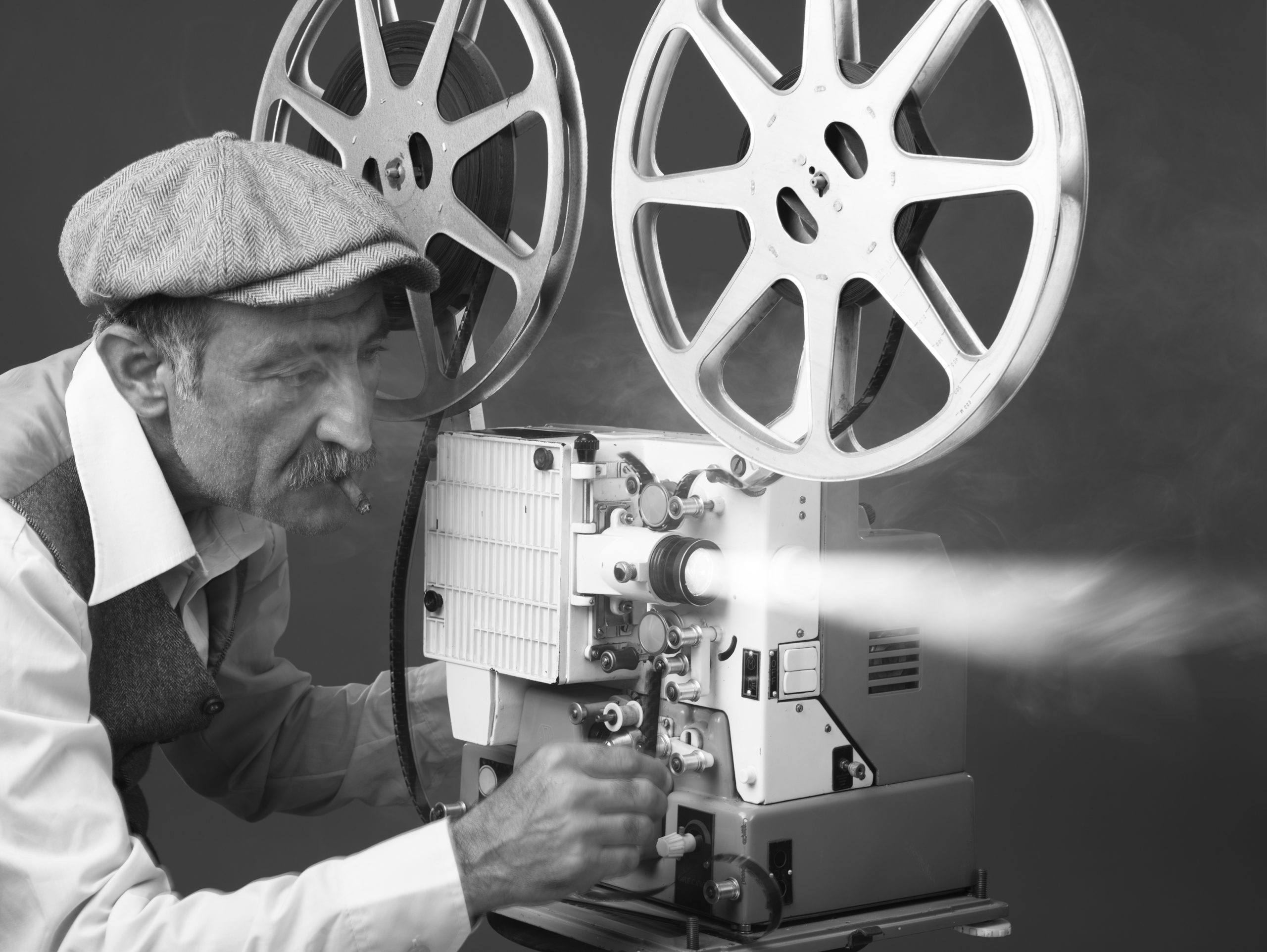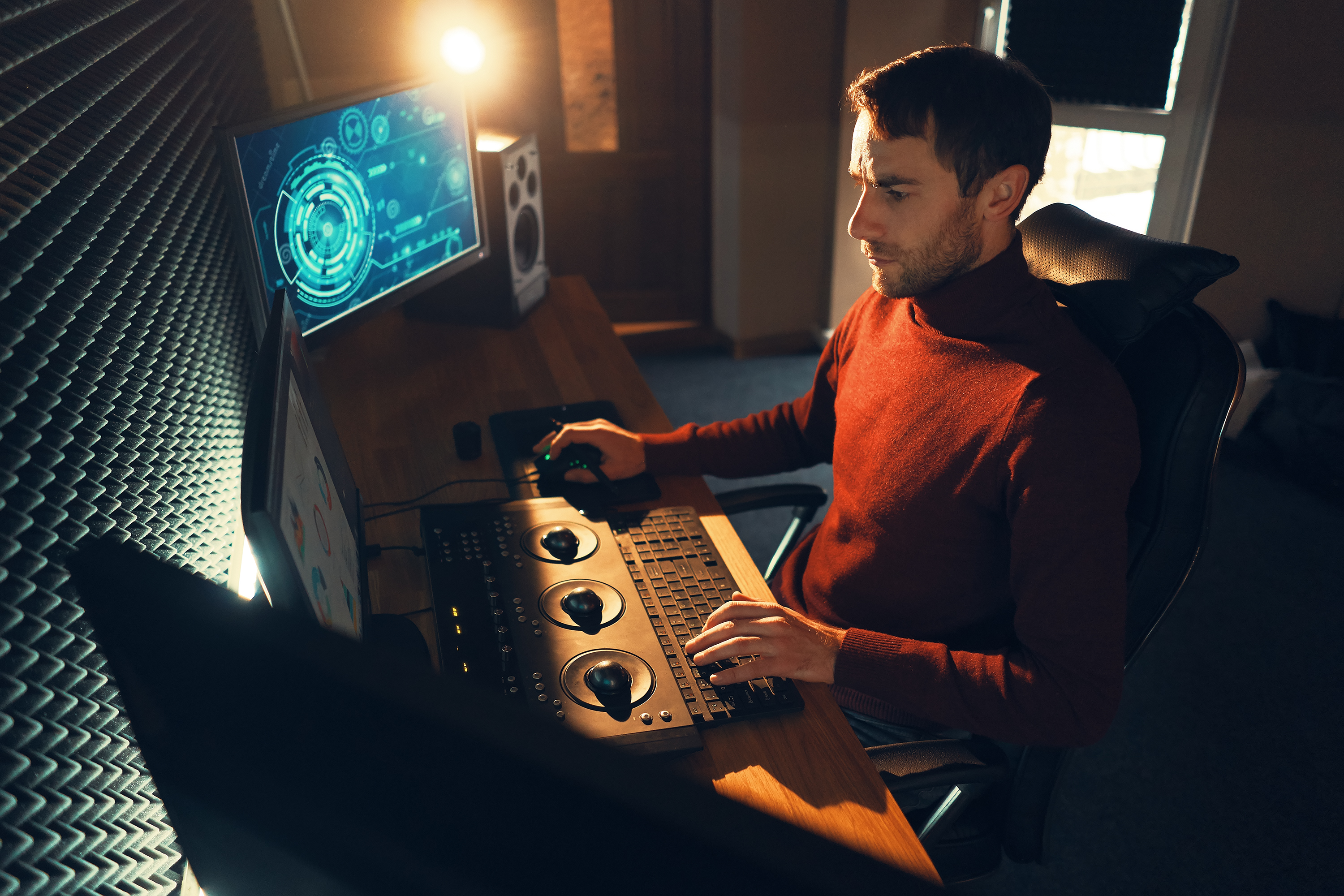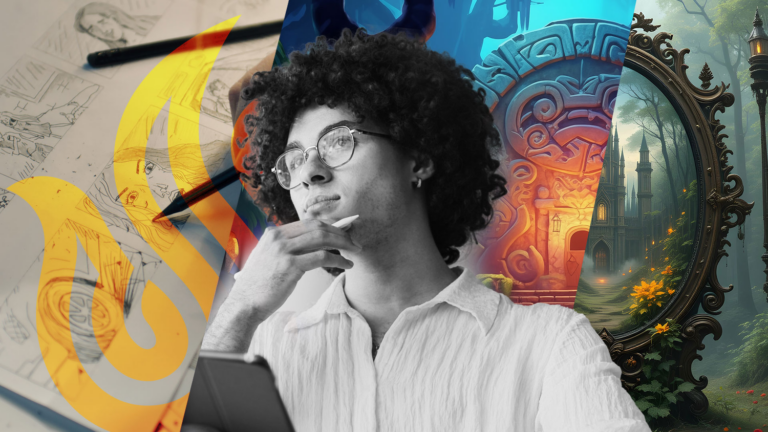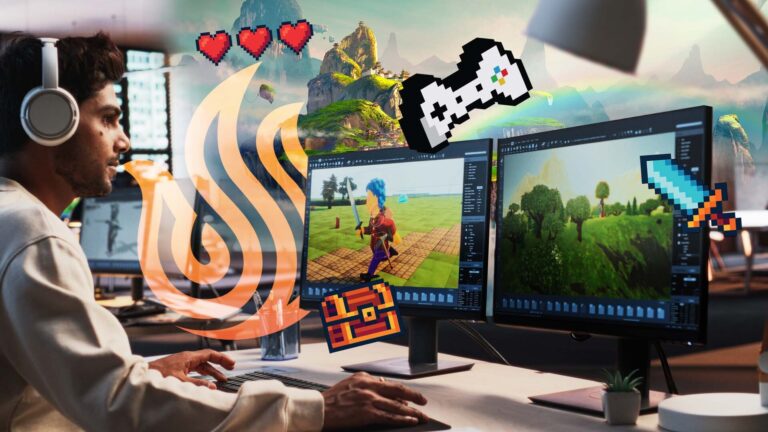The height of the silent era (from the early 1910s into the late 1920s) was a thriving time period full of artistic innovation. From the very beginning, music was always an essential contribution to the atmosphere, giving the audience an emotional experience. During this era, each individual theater would provide its own musical experience. This would be done by a phonograph or actual live musicians. Typically a pianist would improvise to the film or a small ensemble of musicians would perform a classical piece. Once the ability to synchronize music and sound to celluloid became possible in 1929, music quickly became an integral aspect of the film experience. And a new profession was born.

The score forms part of the film’s soundtrack, which also includes pre-existing music, dialogue, and sound effects, and comprises a number of orchestral, instrumental, or choral pieces called cues. Cues are timed to begin and end at specific points during the film in order to enhance the emotion and drama of a scene. Most films have between 40 to 120 minutes of music. However, some films have very little or no music, such as the 2007 Coen brothers film No Country For Old Men, which was acclaimed for having almost no music in its’ minimalist score.
Main elements
Temp tracks
In some cases, composers have been asked to imitate a specific composer or style present in the temp track. On other occasions, directors have become so attached to the temp score that they decide to use it and reject the original score written by the film composer. One of the most famous cases is Stanley Kubrick’s 2001: A Space Odyssey, where Kubrick opted for existing recordings of classical works, including pieces by composer György Ligeti rather than the score by Alex North, although Kubrick had also hired Frank Cordell to do a score.
Structure
Film scores encompass an enormous variety of styles of music, depending on the nature of the films they accompany. The majority of scores are orchestral works rooted in Western classical music, but many scores are also influenced by jazz, rock, pop, blues, new-age and ambient music, as well as a wide range of ethnic and world music styles. Since the 1950s, a growing number of scores have also included electronic elements as part of the score, and many scores written today feature a hybrid of orchestral and electronic instruments.
Source music
“Source music” (or a “source cue”) comes from an on screen source that can actually be seen or that can be inferred (in academic film theory such music is called “diegetic” music, as it emanates from the “diegesis” or “story world”). An example of “source music” is the use of the Frankie Valli song “Can’t Take My Eyes Off You” as the actors sing along to the song in the wedding scene of Michael Cimino‘s 1978 film, The Deer Hunter.
In the 1970s New Hollywood era, film music split in two concurrent, divergent directions with the incorporation of synthesizers and a return to classic scoring. While John Williams revives the classical Hollywood film score with the epic Star Wars soundtrack, director/composer John Carpenter’s 1973 purely electronic score using a modular synthesizer for Dark Star expanded the soundtrack world beyond symphonic, jazz and pop music, introducing a brand-new vocabulary of computerized arpeggios, synthesizers, and other technology, this created a major paradigm shift in how scores were made, causing long-term industry consequences. Up to this point, soundtracks required an ensemble of instrumentalists to perform the music. Orchestras often consist of dozens of musicians, whereas a single individual can program an entire synth score. The explosion of synthesizers in the 1980s, and later digital audio workstations and virtual instruments in the 1990s and 2000s, created a much lower barrier for entry into the industry for aspiring film composers.
Musicians from non-symphonic backgrounds continue to successfully make their mark in the film industry—including rock stars (or former rock stars) like Nine Inch Nails’ Trent Reznor, Cliff Martinez (onetime drummer for the Red Hot Chili Peppers) and Radiohead’s Jonny Greenwood. Plus, there are more active female composers working in the industry than ever, including Wendy Melvoin and Lisa Coleman, Mica Levy, Miriam Cutler, and Rachel Portman, among others.
Like nearly any career in the music industry, there isn’t one straight path to scoring for film, TV or video games. Composing for film and TV is an ever-changing landscape. Many of the jobs are now in the video game industry, and those are often the projects with the biggest budgets. Listen to the score for the Halo series of games and compare them to a Hans Zimmer score. The production value is pretty much the same (Zimmer actually composed a score for The Call of Duty game franchise). The great thing is that the ability to create a score like this is getting easier and easier.
While it is unfortunate that many films no longer need to hire an orchestra, a wealth of new opportunities arise when you can either a) create a realistic-sounding orchestra with high-quality computer samples, or b) compose a score in a style that fits both your own musical flavor and that of the work (even if it has nothing to do with the traditional film score). Either way, this has opened the door to creating professional-sounding portfolios and reels with very small budgets.

- Volunteer for Projects
If you are fortunate enough to attend a school with a film/video game program, seek out every student film/video game maker you can and offer your services. The age-old approach is to use an existing film, remove the soundtrack, and write your own music over it. Another approach is to collaborate with independent film and video game creators and offer your services free of charge. Taking this approach is how you harness relationships early on. Working on independent films/video games and contract work helps with improving and fine-tuning your work, but also to establish a track record.
- Practice makes better!
The goal of practicing is to translate will into action. With practice one learns which techniques are feasible, which skill sets come more naturally, and what areas to really aim to improve in. Composing is exactly the same, but many students forget how important it is to practice their skills daily. With current tools and resources, it is really easy to rely on technology to pull some of the weight, but at the end of the day, basic playing skills coupled with technological resources only improves the quality of the end product.
- Network, Network, Network!
Jobs do not just fall into your lap. In the current climate of an abundance of beatmakers and producers, it is a competitive landscape to say the least. Aligning yourself with the industry, its players and companies, is a skillset in itself. This is where a bit of legwork and good old fashion shaking hands comes into play. Attending industry events such as ASCAP Expo and N.A.M.M. are definitely ways to meet the players. Also becoming involved in organizations such as A.E.S. and Grammy-U early on are great ways to get your foot in the door. However, at the end of the day, you have to have the skills to take on any opportunities that may present itself.
- Manage Your Time
Scoring can be incredibly time-consuming. So how do you make the transition from doing volunteer gigs for friends to creating a career that is a solid means of financial support?
There are various ways to approach this. One way is to take the in-studio route as an intern and work your way up to becoming an assistant, then to a composer. This is typically a very lengthy process that can take years. You’ll need to be prepared to do a lot more than just music-related tasks (such as office tasks, grocery shopping, you name it…) but you’ll also get the opportunity to watch firsthand how the work is done. The age-old story is a composer is offered a job that he or she doesn’t have time for (or may possibly be out sick), and you are in a position to take the job instead. This is where all of your years of preparation meet opportunity!
Did learning about Careers in Post Production/Scoring interest you? University of Silicon Valley is here for the aspiring artists and engineers who live in music and think in sound effects. You want to make great digital audio content on industry-standard recording equipment? University of Silicon Valley will train you in our Audio & Music Production concentration of our BS in Digital Audio Technology degree program. In this Digital Audio Technology program concentration, you’ll create the soundscapes that bring video games, films and other media projects to life. Become familiar with sound design concepts, recording principles, and other knowledge essential to an audio industry career.
University of Silicon Valley is uniquely poised to offer a meaningful and valuable education for 21st century students. We believe in an education that directly correlates with the work you’ll be doing after you graduate. Interested in learning more? Contact Us today.


